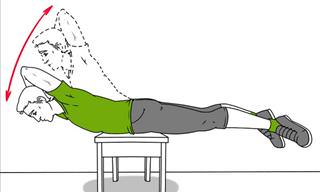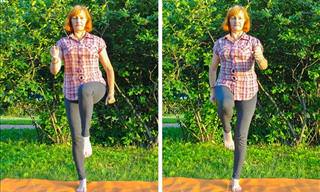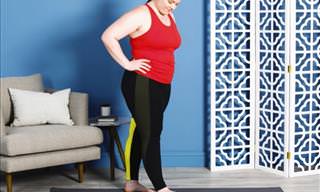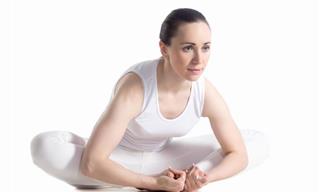What is Range of Motion?
Range of motion is the term used to describe the full movement potential of a joint, usually its range of flexion and extension. The range of motion for any joint is determined by the limitation of the joint itself, as well as the soft tissue structures around it, such as muscles and ligaments.
Sometimes, people mistakenly use the terms 'flexibility' and 'range of motion' interchangeably. While these two terms are related, they are not the same thing. As Dr. Ryan Tibbetts, MD, an orthopedic surgeon at Texas Orthopedics, explained to The Healthy: "Flexibility refers specifically to the ability of muscle, tendon, and connective tissue to lengthen or elongate through a range of motion.”
Related: 6 Stretches That'll Improve Your Flexibility and Motion
There are two main types of range of motion: passive and active. Active range of motion is used to perform most of our day-to-day movements. For example, when you raise your hand to reach for something on a higher shelf. Active ROM in the shoulder is the active use of the muscles surrounding the shoulder to exclusively power the movement of the joint. In other words, active ROM occurs when you use your muscles to help move a specific body part.
Passive range of motion occurs when there is movement around the joint, but you are not using your own muscles to initiate it. Rather, the movement of the joint comes exclusively from an external source, like a physical therapist who manually moves your body while you relax. Passive ROM is usually used in the initial stages of healing after injury or surgery.
Though passive and active ROM are the two primary types, there is also a third kind known as active-assist ROM. It occurs when the movement of the joint is partially powered by your own muscles and partly by an external source. For example, using a resistance strap to help stretch your hamstrings would be considered an active-assist range of motion exercise.
Common Reasons for Range of Motion Decline
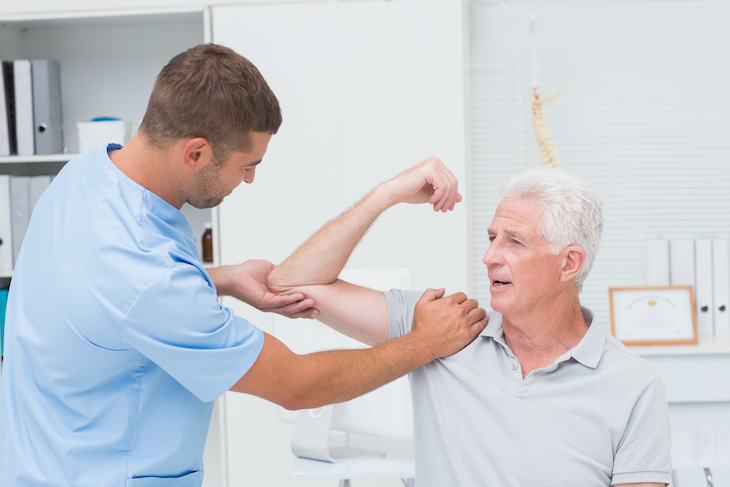
Decrease in muscle mass, muscle strength, flexibility, and joint lubrication are all common processes of aging. Unfortunately, they contribute to decreased range of motion. Other factors causing range-of-motion issues are lack of sufficient movement and poor postural positioning.
In fact, experts agree that the joints most commonly impacted by reduced ROM are those associated with sitting. Those include the neck, upper back, shoulders, hips, and lower back. These days, where we spend long hours sitting in front of a computer or looking down at a phone screen, poor posture is becoming increasingly widespread.
Poor ROM can also be caused by injuries (like fractures) or a medical condition like rheumatoid arthritis or ankylosing spondylitis (an inflammatory spine disease). Reduced ROM in the knees, elbows, wrists, and ankles is more likely to be the result of an injury or a medical condition.
3 Exercises to Improve Your Range of Motion
The range of what is ‘normal’ for each joint varies from person to person. However, a clear sign that your ROM is decreasing is a feeling of stiffness or pain that restricts the fluency of your movement.
Another sign to look out for is the lack of symmetry. "Joints should have a symmetric range of motion. So the right knee and left knee should have similar ranges of motion,” says Dr. Brian Schulz, an orthopedic surgeon at Cedars-Sinai Kerlan-Jobe Institute in Los Angeles. Here are a few simple and effective exercises that can help, if you notice a reduced range of motion in your body.
1. Upper body clamshell
- Bring one knee slightly forward, and place the other leg slightly behind the hip.
- Raise your arms at 90 degrees, so they are parallel to the floor.
- Bring your forearms together in front of you.
- Return your arms to the starting position while squeezing your shoulder blades together.
- Repeat 6-10 times on each side.
To make this exercise more challenging, you can hold weights in your hands.
2. Semi sits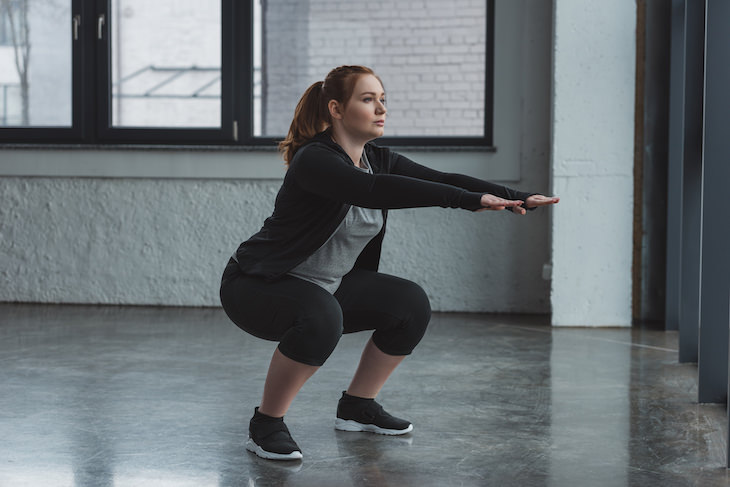
- Stand in front of a chair with your feet hip-width apart and the muscles of the core tight and engaged.
- Slowly lower your body to the chair and bend your knees like you’re going to sit.
- Touch the chair seat, then return to a standing position. Make sure you keep your head and chest up and don’t let your knees go past your toes.
- Push up through the heels.
- Repeat 6-10 times.
3. Side Bends

- Start by sitting upright in a chair with your feet flat on the floor.
- Place one hand behind your head.
- Stretch the other arm out to the side.
- Lean towards the side as if you are trying to touch the ground. Make sure your chest doesn’t fall forward and both of your feet stay flat on the floor.
- Repeat 6-10 times on each side.
If you are not seeing progress on your own or feel that you need a personalized exercise program or advice, reach out to your physician or seek the help of a professional physical therapist.
Share this information with those who can benefit from it
 Go to BabaMail
Go to BabaMail






































